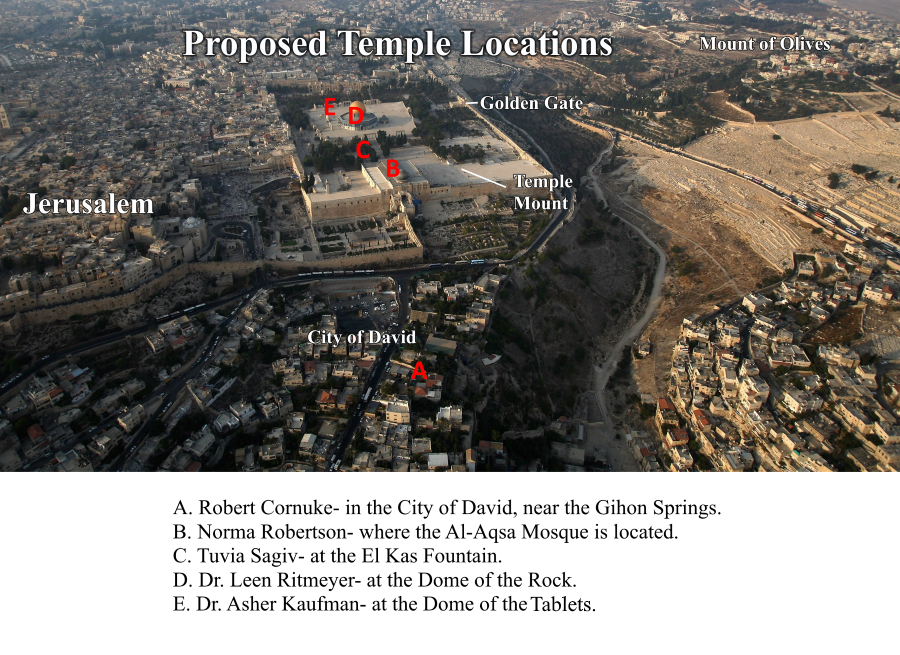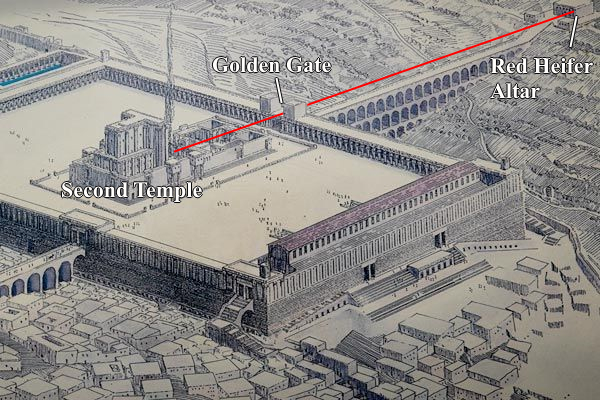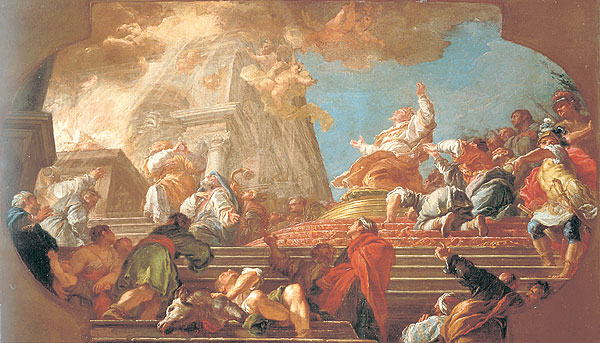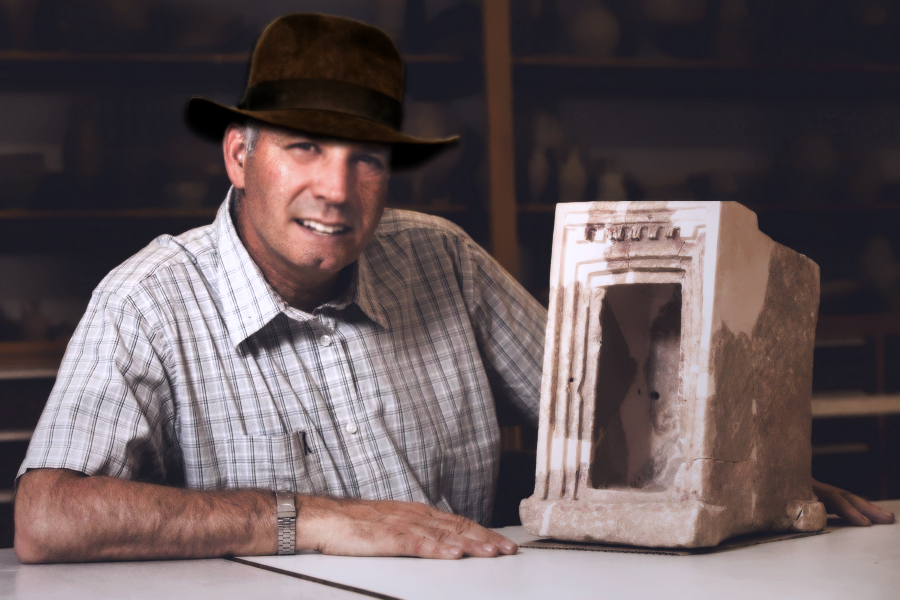An Interview with Professor Stephen Ben-Yosef
Today I am visiting with Professor Stephen Ben-Yosef from the Hebrew University of Jerusalem.
“Thank you for inviting me to your office, Professor.” His office is spacious, filled with packed bookshelves and crowded curio cases.
“Thank you, Mr. Sellers,” replied Ben-Yosef. “I’m glad to have you here.”
I sat back in the comfortable guest chair, marveling at all the artifacts in the curio cases. There were pieced together ornate vases, clay figurines and seals, stone implements, and several ancient coins. I’ll ask about them after the interview, I thought to myself. First business, then pleasure. Ben-Yosef’s office was bright with the scent of old books and an earthy smell of pottery.
"To begin, why don’t you tell us about yourself,” I asked.
“Well, I am married to a beautiful wife, Chaya. We have three children: Sharon 17, Simon 19, and Elik 21. Simon and Elik are currently in the military. I think Simon will make a career of it,” he said pointing to the framed picture of his family on the desk. With his chin he nodded to several diplomas and awards on his office wall, “I received my MA and PhD here at Hebrew University. As you can see,” he said waving at the glass cases, “my main interests are the Bronze and Early Iron Age of Biblical Archaeology and Anthropology, more specifically, the Second Temple Period.” Then he added, “I am a practicing Jew and my family attends Shabbat services most weeks. Not as regular as I’d like,” he said, a corner of his mount lifting up.
“What got you interested into Archaeology?” I asked, nodding at his collection of artifacts.
“Believe it or not,” Ben-Yosef said with an ironic smile, “it was after watching Raiders of the Lost Ark. I was just a kid then. I wanted to be just like Indiana Jones, I even have his hat,” he said pointing at the sweat stained fedora hanging by the door. “As a kid I dreamt of going on adventures and finding the lost Ark of the Covenant.” Then he added, “I haven’t found it yet, but I have a good idea where it’s at.”
“Oh really. Can you tell me?”
With a mischievous smile he laughed. “No, you’ll have to wait until Book II.”
I nodded and thought, right, we can’t give everything away too soon.
“There is a big controversy on the exact location of the Jerusalem Temple,” I said. “Where do you think it is?”
Ben-Yosef thought for a moment, pondering. He then reached into a desk drawer and pulled out a large piece of paper and spread it between us on the desk. I recognized it immediately as an aerial photograph of the Temple Mount.

“It would take volumes to answer that question,” he said looking at one of his many bookshelves, “and it actually has. Here, let me try and break it down. First, there are several competing theories on the location of Solomon’s Temple.” He paused again and picked up a pencil to use as a pointer. “Let’s begin, shall we, with the most southern first, then I’ll mention the theories moving northward. First, writer and Biblical investigator, Robert Cornuke, believes that the Temple resided in the City of David near the Gihon Springs here,” he said tapping a spot near the bottom of the photo with the eraser, “which is south of the Temple Mount.” Then he moved his ‘pointer’ near a small dome on the Temple Mount, “Norma Robertson, teacher and graphic designer, places the Temple where the Al-Aqsa Mosque is located today.” He next indicated a spot just north of the last one, “Architect, Tuvia Sagiv, postulates that the Temple was south of the Dome of the Rock over the El Kas Fountain.” Ben-Yosef then tapped his pencil on the golden dome that dominated the Temple Mount, “the traditional and most popular Temple location theory is that it sat over where the Dome of the Rock is now located,” he said looking up. “The biggest proponent is Dr. Leen Ritmeyer, an archaeological architect, who has devoted many years defending this theory and compiling evidence to prove this theory. And last but not least,” Ben-Yosef said, “we have Physicist, Dr. Asher Kaufman , who proposes that the Temple stood north of the Dome of Rock, over where the present Dome of the Tablets sits.” He now indicated a spot just north of the Dome of the Rock.
“So, which theory do you support?”
“I support Dr. Kaufman’s theory,” he said matter-of-factly. “I believe that the flat bedrock that lies under the Dome of the Tablets is where the Ark of the Covenant once sat in the Temple’s Holy of Holies.
“Why do you believe that it was under the Dome of the Tablets rather than the Dome of the Rock?” I asked. “As you just stated, isn’t that where most biblical archaeologists and experts contend it was located?”
Ben-Yosef leaned back smiling, “you know why very well, Mr. Sellers. You did write about it in your book.”
“Okay,” I said, smiling back. “Did you believe in Dr. Kaufman’s theory before your big discovery?”
“Yes. In fact, I did. I have leaned toward the most northern location for many years.”
“Can you tell us why?”
“Of course. For one, the rock-mass under the Dome of the Rock is too rough and uneven to be the threshing floor where the Ark resided. A threshing floor that was used for generations would be worn, flat and smooth. Just like the bedrock found under the Dome of the Tablets. Here, compare these two photos and you can judge for yourself.” Ben-Yosef then handed me two pictures to examine. He was right. The rock under the Dome of the rock was very uneven while the other was flat and looked almost polished.

Left, Dome of the Rock. Right Dome of the Tablets.
“Then there is the orientation of the Temple itself,” he said, taking another picture from the drawer. It showed the Temple Mount as it must have looked at the time of Christ, the Second Temple period. “The Temple was placed on Mount Moriah over the threshing floor of Araunah, facing east. If you stood at the temple outer doors and faced east, you would be able to see the city gate in line with a bridge that pointed toward the peak of Mount of Olives where a very important sacrifice was held, the sacrifice and burning of the Red Heifer. The reason for this was that during the ceremony, the High Priest was required to see through the huge, ornate, open doors of the Temple, into the interior of the temple and see the curtains, behind which was the Holy of Holies and the Ark of the Covenant.” Ben-Yosef, using his pencil ‘pointer’, drew an imaginary line between the Temple, through the Golden Gate, following the bridge, then up to the peak of the Mount of Olives.

Second Temple axis lines up with the Golden Gate, Red Heifer bridge and altar.
“Now if you look at the present Temple Mount, the only location that intersects with this imaginary line is the Dome of the Tablets. The Dome of the Rock is over 100 meters too far south to be in this alignment, let alone the other theorized locations.”
“Yes, I see. Is there other evidence that you could share with us?” I asked.
“Dr. Kaufman’s research included historical and ancient literary sources, images on coins and glass fragments as well as his own surreptitious survey of masonry formations that he found on the Temple Mount. This evidence remained after the destruction of 70 AD and survived the subsequent reconstruction by the Byzantine and Muslim Empires. He lays it all out in his book, The Temple Mount: Where is the Holy of Holies.” Ben-Yosef pointed to a book with a red cover on his bookshelf.
“Just think about the name of this small dome sitting alone on the Temple’s platform,” Ben-Yosef said, leaning back in his chair. “The origin of the name for the Dome of Tablets is forgotten in history. Many believe it was so named to honor the residing place of the Ark which held the stone tables of Moses.”
I nodded. “That makes sense. Because of your discovery, we now know without any doubt where the Temple once stood. What is keeping you from building the Temple?”
“That is a very controversial subject among Jewish scholars,” Ben-Yosef explained. “One side, led the Nascent Sanhedrin and the Temple Institute , favor the construction of the Third Temple in the very near future, while others believe that we should wait because the Messiah will build the Temple when he comes.”
“Has there been any progress toward that goal?” I asked.
“Well, the Sanhedrin and the Temple Institute have gone a long way to prepare for that day. The Sanhedrin has chosen a High Priest, a well-known and humble Rabbi and they have been busy training the many priests that will be needed to perform the important daily rituals in the Temple.”
“For many years,” Ben-Yosef continued. “The Temple Institute has been building the accouterments needed to furnish the Temple. They have built over 90 ritual items that will be used in the various Temple rites––from priests clothing, to the gold and silver shofars, to the altar where sacrifices are to be made. They have even raised a herd of red cattle from which one will be chosen to use in the Red Heifer ceremony.”
“What obstacles do you face, besides the Islamic Waqf who control the Temple Mount today?”
“The resolve of the Jewish people and their politicians,” said Ben-Yosef without hesitation. “You have to realize that most of the Jews and their leaders are secular and non-religious. They may celebrate the High Holy Days, less than half have a serious belief in God. Most would oppose the blood sacrifice of animals in today’s modern society, even though they eat meat at almost every meal and look the other way at the slaughter of thousands of animals each year during the pilgrimage to Mecca.”
“Just the other day I witnessed a reenactment of a Temple ceremonies performed under the direction of the Sanhedrin and the Temple Movement, for the training of those who are from the priestly class known as Kohanim. They are trained in special schools on the duties of the priests, the use of ritual vessels created for use in the Third Temple, and even practice on a newly constructed altar of burnt offering.”
.“So it seems that all is ready to begin construction.”
“Yes, it is. Now, we need a change of heart by the Jewish people here and around the world. I believe the increasing persecutions we see today will drive more secular Jews to their knees in prayer and into their synagogues. We need the blessings that obedience to the Laws, set forth by Moses, will bring. The world needs those blessings. They will only come when God’s people return to worship and have faith in the Lord.”
“Imagine if we could build the Third Temple what it would mean to the five million or more faithful, practicing Jews around the world. They would all want to make the trek to the Holy Land during Passover to celebrate the Passover Seder with real roast lamb. Millions would crowd Jerusalem for the chance to partake of Passover here in the land God gave their forefathers.”
“After the Temple is completed then, if we are worthy, the Lord’s Presence, His Shekinah, will once again dwell in His House and bless and guide the nation of Israel.” “What is the Shekinah?”

"King Solomon praying before the Temple" by painter Giuseppe Bonito, c. 1750.
“It is the Glory of the Lord, His presence. When Solomon dedicated the First Temple it filled His Temple and remained there, performing miracles, until the Temple was destroyed by the Babylonians. When the Temple was rebuilt a second time it returned, albeit not as powerful as before. It remained in His House for centuries. His Shekinah visible left the Temple forty years before the Romans destroy it in 70 AD. My hope is that the Lord’s presence will return again once His House is rebuilt.”
In my mind I made the calculation of what occurred forty years prior the destruction of Jerusalem and left it unsaid, nodding.
“Your actions in The Half Hour of Silence, will be a huge help in the building of the Third Temple,” I said. “One last question, what is your greatest wish for your country?”
“That my people can live in peace and harmony with our Arab neighbors. That our two people, united in our common blood and ancestors, can one day become reconciled in this land we all call holy.” “Amen,” I said. I contemplated what the Bible prophesied what must come before the ‘peace and harmony’ could come and the blood that will be shed prior to that great event. The appearance of Ben-Yosef’s Messiah on the Mount of Olives, the second coming of Jesus Christ.
“Thank you, Professor,” I said in a somber tone. Brightening up I continued, “thank you so much for giving me and my readers time from your busy day. What with all the events of Book I and II you must be very busy.”
“Not at all Mr. Sellers, Ben-Yosef said with a bright smile. “The pleasure is mine.”
JK Sellers

